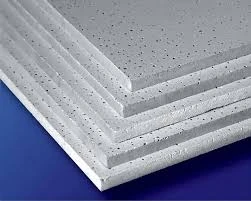Oct . 05, 2024 16:32 Back to list
laminated gypsum
The Versatility and Benefits of Laminated Gypsum
Laminated gypsum, often recognized for its unique properties and multifaceted applications, has emerged as a popular choice in both residential and commercial construction. This innovative material integrates layers of gypsum plasterboards, which are adhered together to enhance strength, insulation, and aesthetic appeal. In this article, we will explore the characteristics, advantages, and various uses of laminated gypsum.
What is Laminated Gypsum?
Laminated gypsum consists of multiple layers of gypsum board, commonly referred to as drywall, that are bonded together to create a thicker and more resilient product. The process involves the use of high-quality adhesives, which not only ensure a sturdy bond between layers but also contribute to the overall safety and fire resistance of the material. Laminated gypsum can come in various thicknesses and finishes, making it suitable for a wide range of applications.
Advantages of Laminated Gypsum
1. Enhanced Durability One of the primary benefits of laminated gypsum is its superior durability. The layered construction provides additional strength, making it less prone to bending or breaking under pressure. This makes it an ideal option for high-traffic areas or settings where additional durability is required.
2. Sound Insulation Laminated gypsum has excellent soundproofing qualities. The dense structure of the material effectively dampens sound, making it a popular choice for theaters, conference rooms, and residential spaces where noise reduction is a priority.
3. Fire Resistance Gypsum itself is naturally fire resistant. Laminated gypsum enhances this property, making it suitable for applications where fire safety is crucial. This characteristic makes it a favored choice in commercial buildings, schools, and other public spaces.
4. Aesthetic Flexibility The surface of laminated gypsum can be easily customized. It can be painted, textured, or finished in various ways to enhance the aesthetic appeal of a space. This flexibility allows designers and architects to achieve their desired look without compromising on functionality.
5. Thermal Insulation Beyond its acoustic properties, laminated gypsum also offers thermal insulation benefits. The layered construction can help maintain interior temperatures, which can lead to energy savings and increased comfort within a building.
laminated gypsum

Applications of Laminated Gypsum
Laminated gypsum is remarkably versatile and can be utilized in numerous settings
- Residential Spaces It is frequently employed in homes for walls and ceilings, especially in areas requiring additional soundproofing such as bedrooms and home offices.
- Commercial Buildings Many offices and commercial spaces utilize laminated gypsum for its fire-resistant and sound-dampening qualities, creating a comfortable and safe environment for employees and clients.
- Sports Facilities Gypsum's durability makes it an excellent option for walls in gyms and recreational centers, helping to withstand the impact of sports equipment and activity.
- Educational Institutions Schools and universities benefit from laminated gypsum's sound insulation properties, allowing for a conducive learning environment where distractions are minimized.
- Healthcare Facilities In hospitals and clinics, laminated gypsum provides a sterile finish and is easy to clean, which is essential for maintaining hygiene.
Conclusion
In conclusion, laminated gypsum stands out as a remarkable building material that integrates functionality, durability, and aesthetic appeal. Its numerous benefits make it an excellent choice for various applications, ranging from residential constructions to large commercial projects. As the demand for innovative building solutions continues to grow, laminated gypsum is likely to remain at the forefront, offering versatile and effective solutions for modern architecture.
-
Quality Ceiling Trap Doors & Access Panels | Easy & Secure AccessNewsAug.30,2025
-
Durable Ceiling T Grid Systems | Easy InstallationNewsAug.29,2025
-
PVC Gypsum Ceiling: Durable, Laminated Tiles for Modern SpacesNewsAug.28,2025
-
Pvc Gypsum Ceiling Is DurableNewsAug.21,2025
-
Mineral Fiber Board Is DurableNewsAug.21,2025
-
Ceiling Tile Clip Reusable DesignNewsAug.21,2025







